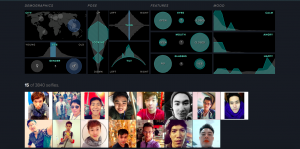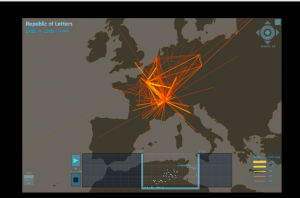The first sample DH project I chose was “selfiecity.” The DH project takes a look at people taking selfies and its goal is to find common themes and trends throughout the images. The primary focus of it is visualization because it used imageplots to display the thousands of pictures to reveal the results of the findings. The study categorizes the pictures into what types of people take selfies, what their poses are, and what their expressions are. It compared people taking selfies in numerous cities worldwide and then further compared gender and age. Crowdsourcing was a secondary approach used on “selfiecity” because 3200 photos were used to determine and reveal the patterns. The visualization method fits perfectly with this scholarly subject matter because photos, something visual, were being analyzed, so it makes sense that the results were displayed visually. Since this project takes the selfies of individuals from numerous different countries into consideration, displaying the results visually make it easier for everyone involved to understand the results. It helps eliminate the language barrier that could occur if it was displayed in a different manner.

The Mapping of the Republic of Letters uses data visualization to understand the correspondence of networks. When specifically looking at Voltaire, visualization is used to see his correspondence and to understand his connections to certain people and places. The method used fits with the subject matter because looking at letters and other historical archives used in this process makes the connections very clear and easy to see where his ties are to. A map is used to connect the countries which is best for understanding this specific type of information because the study is discussing the ties between countries all over the world. Those looking at the work will immediately be able to tell where most of the communication took place.

Hailey Zimmerman is a sophomore finance major at Bucknell University in Lewisburg, PA. She is from Darien, CT.






